How a Boston tycoon's high-wheel bicycle rolled into a Gilded Age Cohasset mansion
- Oops!Something went wrong.Please try again later.
COHASSET − A rolling stretch of Jerusalem Road along the shoreline here is known as an especially beautiful part of New England's scenic rocky coast. It provides panoramic views of Massachusetts Bay, Boston Light on Little Brewster Island and, in the distance, Boston's North Shore.
Cycling clubs from Boston and the South Shore have made it a regular route for years. There is more to see than many may realize. As you near the end of Jerusalem Road near Hull, if you turn south onto Howe Road, a different world awaits with a step back in time.
It seems fitting that a favorite ride for today's cyclists is so close to the former summer home of the man who did so much to popularize recreational bicycling in this country.
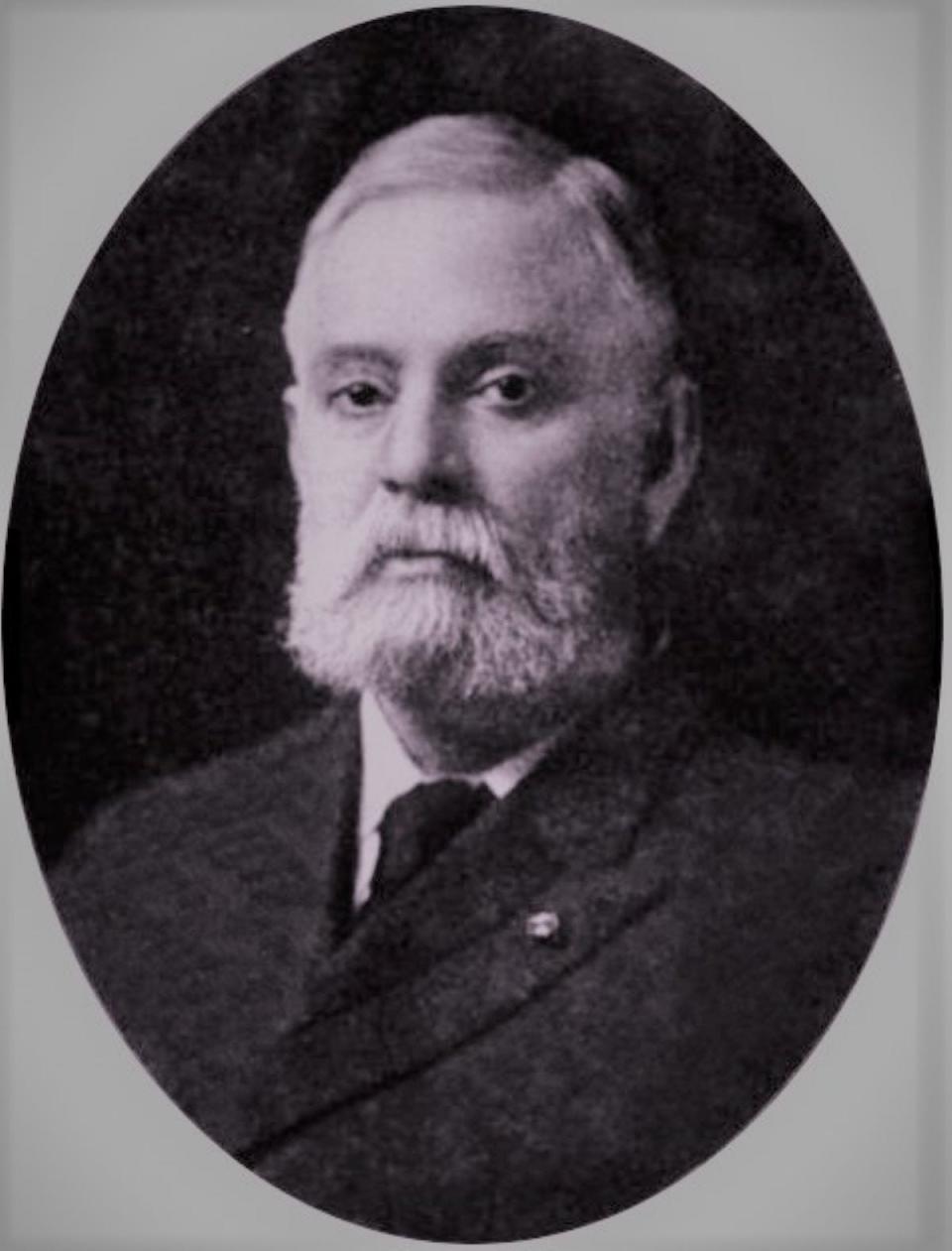
Nestled in the granite ledges are a handful of stone houses built more than a century ago. They are reminders of the Gilded Age when a group of wealthy Boston businessmen had their summer homes here, part of a 50-acre estate overlooking Straits Pond.
Why was Col. Albert Augustus Pope famous
Col. Albert Augustus Pope, a pioneer in both the bicycle and automobile industries, was among the best-known of the well-connected landowners group. By the late 1800s, Pope's company was the world's largest producer of bicycles.
He first brought British high-wheelers − bicycles with large front wheels − to America and then began manufacturing them as the Columbia High-Wheel in Hartford, Connecticut. That led to other "safety bike" models that have the two equal wheel proportions we have today. He later produced a popular line of Pope automobiles, including an electric car and an electric motorcycle.
In his book "Peddling Bicycles in America, The Rise of an Industry," Bruce Epperson describes Pope retreating to his hilltop estate in Cohasset in 1898 after his son, Charles Linder, died at age 16 of a high fever at Peekskill Military Academy in Upstate New York.
What property in Cohessett did Albert Pope own
Daib Road runs off Howe Road and at the end is Pope's former Tudor mansion, then called Lyndermere. It is now a 10-unit condominium building on 3 acres called the Howe Estate after the man who bought it from Pope. The mansion was originally built in 1883 by Asa Potter and purchased by Pope and his wife, Abby, in 1892 as their summer home.
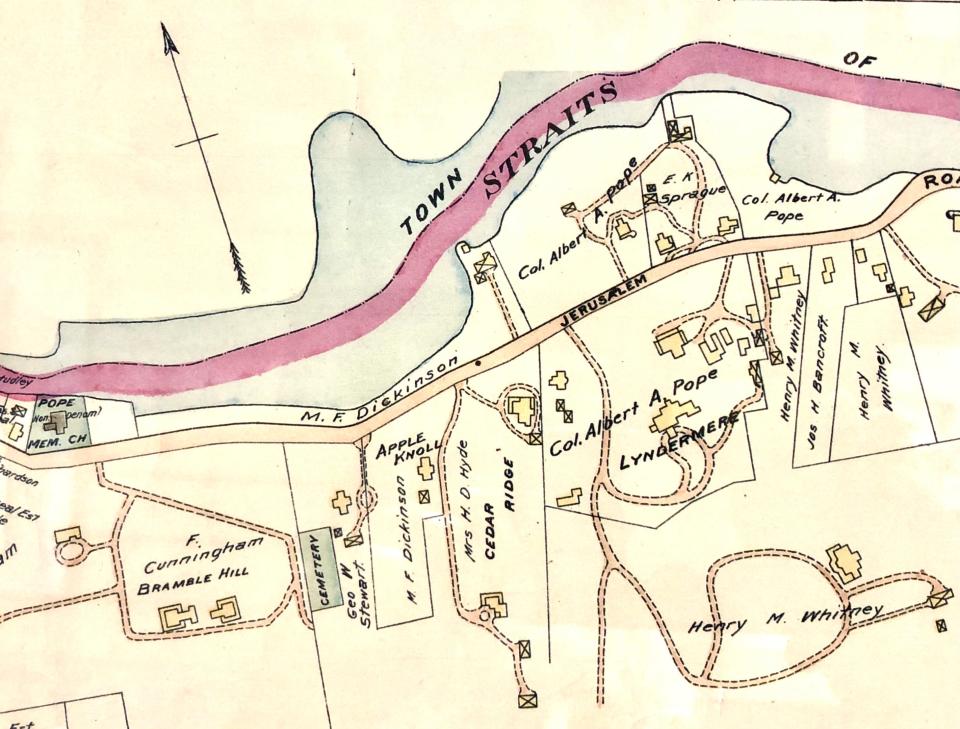
Pope loved the bustle of family life and entertaining his large extended family in Cohasset, author Stephen Goddard writes in his book "Colonel Albert Pope and His American Dream Machines: The Life and Times of a Bicycle Tycoon Turned Automotive Pioneer."
In the late 1880s, Pope was selling a quarter-million bicycles a year, and by 1903 his Columbia bicycles were household names in America.
What is left of this Gilded Age mansion
Continuing down Howe Road, you pass other stone houses, with dramatically different roofs, from that era. Near the end of the loop, there is a solid-looking house with a turret at 21 Howe Road. This was the Pope estate's former carriage house and was right behind the mansion, easily reached through the backyard.
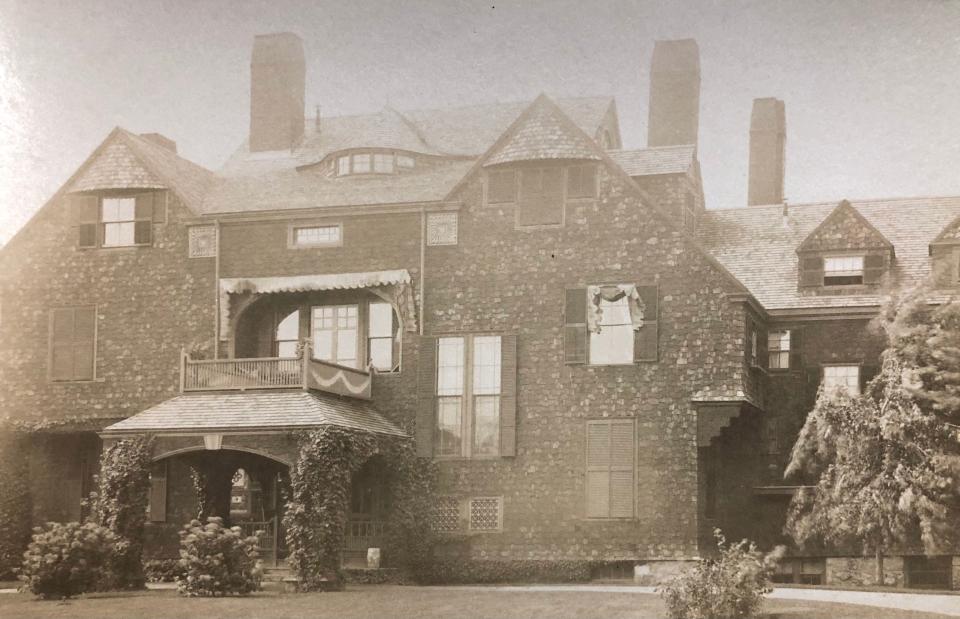
Bill and Kristin DiCroce, of Falmouth, called the carriage house home for nine years from April 2013 to May 2022.
"I loved this property," Kristin DiCroce said in a recent interview. "We had traveled in Europe and fell in love with the European look, the stucco, the stone walls. And we did a lot of entertaining, with beautiful views of the Atlantic Ocean."
Bill DiCroce, an executive with an engineering background, was excited about "the only really old house I've ever had" and he was determined to do his best to restore the original attributes. The turret had been closed off; he reopened it to expose the louvers, or vents.
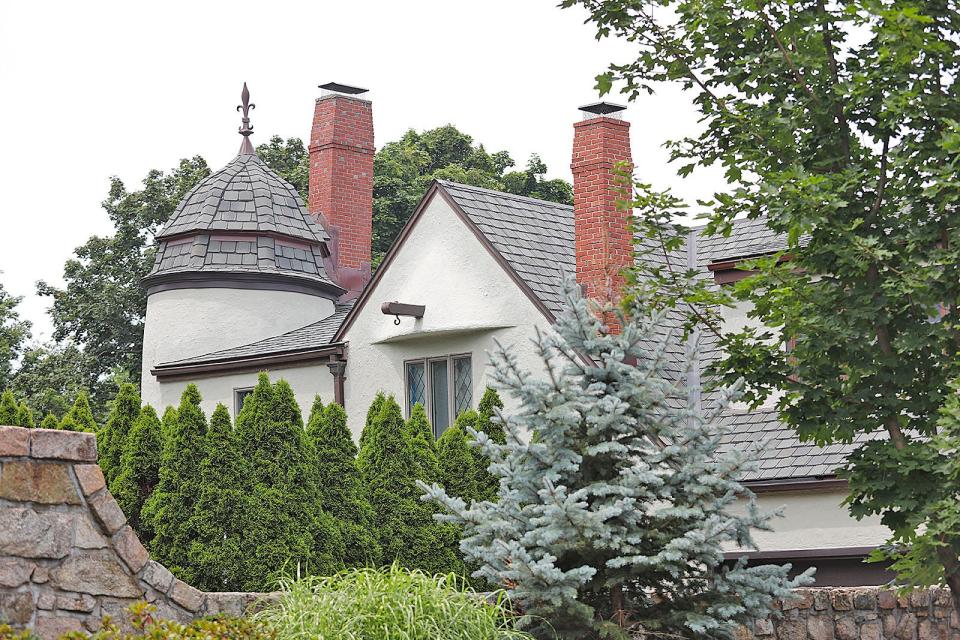
A year ago, the DiCroces sold the house after extensive renovations because they also had a retirement home in Falmouth. They had spent more than half a million dollars on restoring the 130-year-old stone gates, stone walls and the turret.
"We were really passionate about honoring the time period," Kristin said.
Both described the house as very cool in temperature inside and "built like a nuclear bomb shelter." The walls are made of concrete with huge beam construction.
"They had to be. They had horses and carriages banging around in there," Bill said.
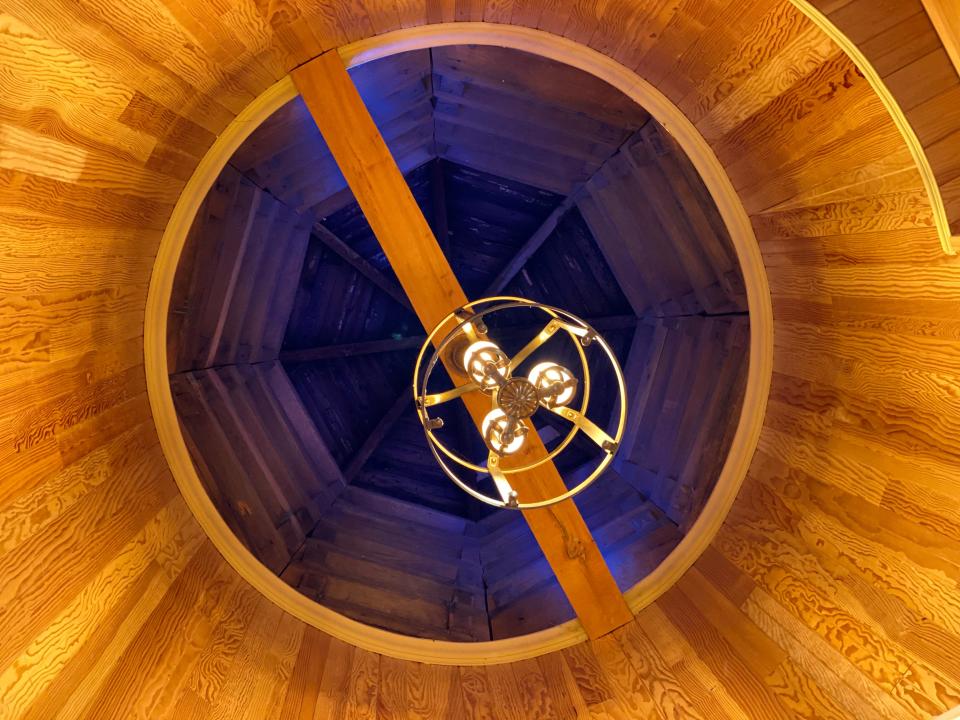
The DiCroces also became very interested in Pope's life story and accomplishments.
Pope's contribution to the United States
Albert Augustus Pope was born in 1843 in Boston and died in 1909 at age 66 at his Cohasset home. He served with distinction in the Civil War with the 35th Massachusetts Regiment and was given the honorary title of lieutenant colonel.
After the war, he returned to Boston and developed a successful shoemakers' supply business (then a leading industry).
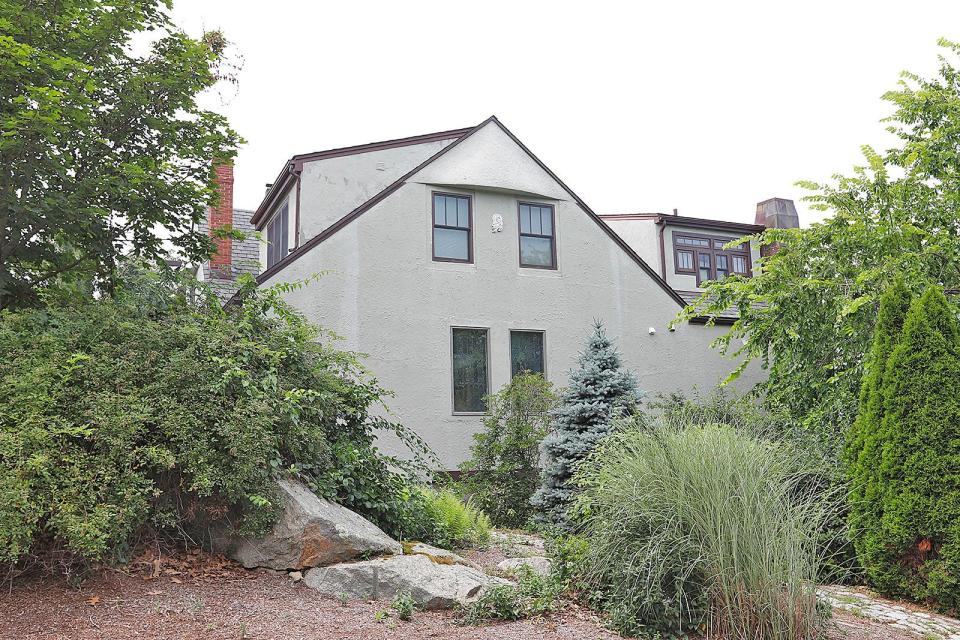
In 1871, he married Abby Linder, of Newton. The couple had six children (one died in infancy). They first lived in Newton, where he was an alderman. In that role, in 1876 he traveled to the Centennial Exposition in Philadelphia and was fascinated to see the new high-wheeler bicycles from England. He went to Europe to see how they were made and arranged to get some.
According to Eric Hintz, of the Lemelson Center for the Study of Invention and Innovation: "In 1878 Pope rode the train from Boston to Hartford, then, to the amazement of the city’s onlookers, rode his high-wheeler from the station down Capitol Avenue to the Weed Sewing Machine Company."
Factory superintendent George Fairfield agreed to build 50 test bicycles for Pope. That was just the start.
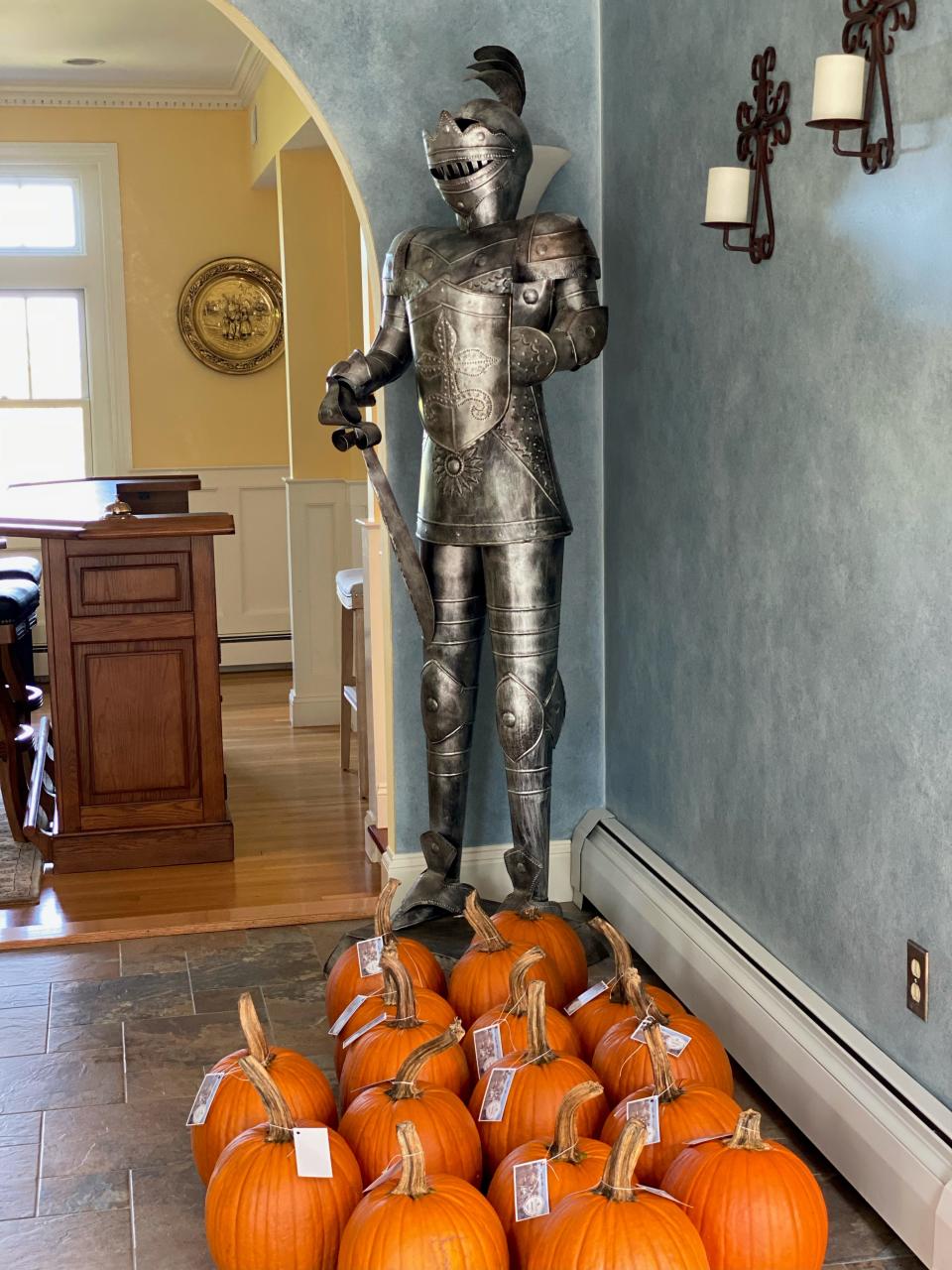
What do know about the Good Roads Movement and his two companies
By 1895, the Pope Manufacturing Co. had five factories in Hartford and 4,000 workers. A glass paperweight from that era sports his image and the phrase "founder of the manufacture of bicycles in the United States and the pioneer of the Great Movement for Better Roads."
Pope, who grew up in precarious economic circumstances, was regarded as very hard-working, shrewd about patents and a stickler for details. Hintz cites an 1896 interview in which Pope said each bicycle had 800 separate pieces, all carefully inspected, and he employed "expert cyclists" to test ride his bikes.
The roads of the day were often rutted, muddy, uneven − dangerous for motorists and cyclists. Pope advocated widely for improved surfaces, shaped the Good Roads Movement, and helped form the League of American Wheelmen in 1880.
By 1896, bicycles had flooded the market and as the boom slowed, Pope opened the Columbia Electric Vehicle Co. in Hartford. Gregg Mangan writes about Pope's "master showman's mind" and his ability to predict trends on the connecticuthistory.org website. Pope is also widely credited with being among the first automobile manufacturers to use mass-production techniques.
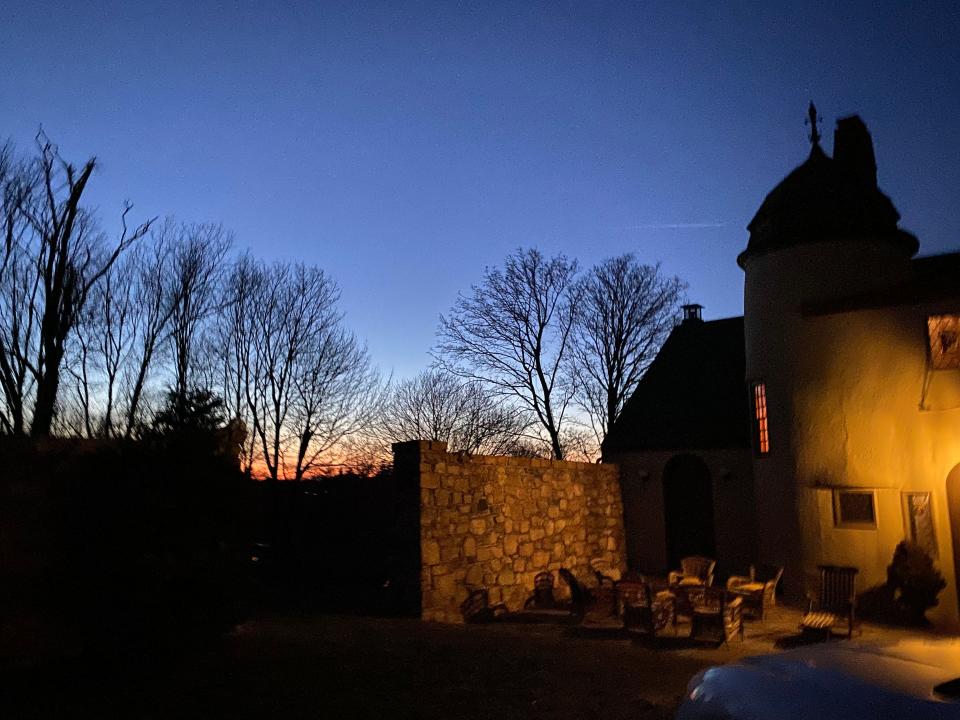
Pope financed faculty positions in road engineering at the Massachusetts Institute of Technology. He helped make Massachusetts the second state, after New Jersey, to create and fund a highway commission. He loved studying rhetoric to practice the art of persuasion with logical arguments.
He embraced advertising and mass-marketing techniques and supported the rights of women to enjoy the freedom of movement and dress that bicycling offered to men.
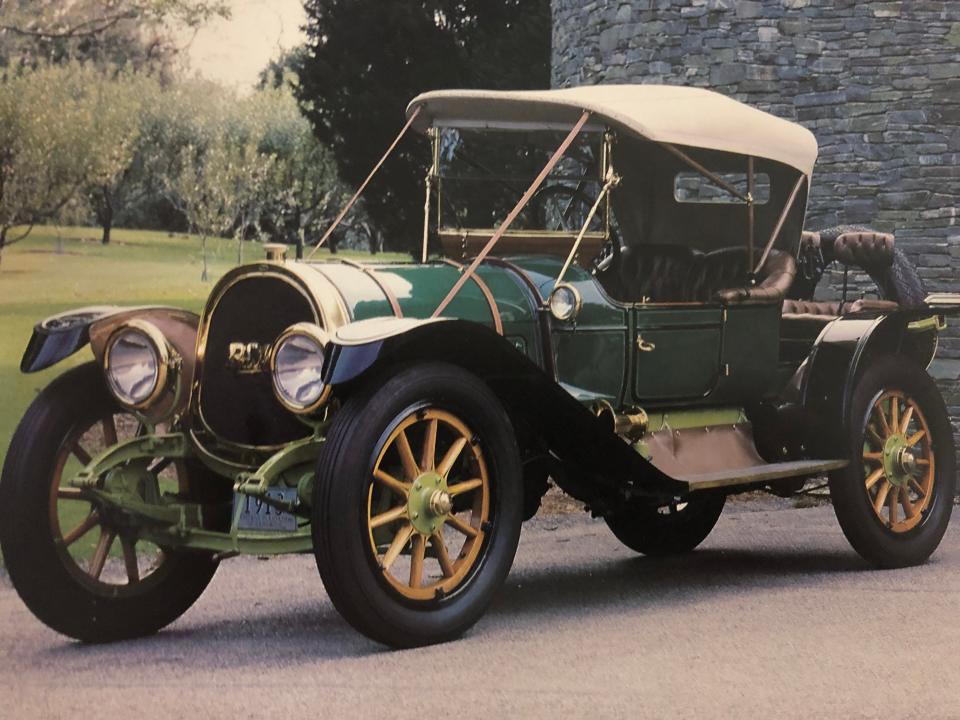
There is much to admire about this savvy pioneer, who learned how to ride the high-wheelers he first championed. A high school dropout due to family circumstances, he was part of an era when businessmen "took risks," as Lynne DiGiacomo, curator of the Cohasset Historical Society, noted.
To watch a YouTube video of how to get on, ride and dismount from a high-wheeler.
Reach Sue Scheible at sscheible@patriotledger.com.
This article originally appeared on The Patriot Ledger: Cohasset home remaining piece of Albert Pope's summer mansion

